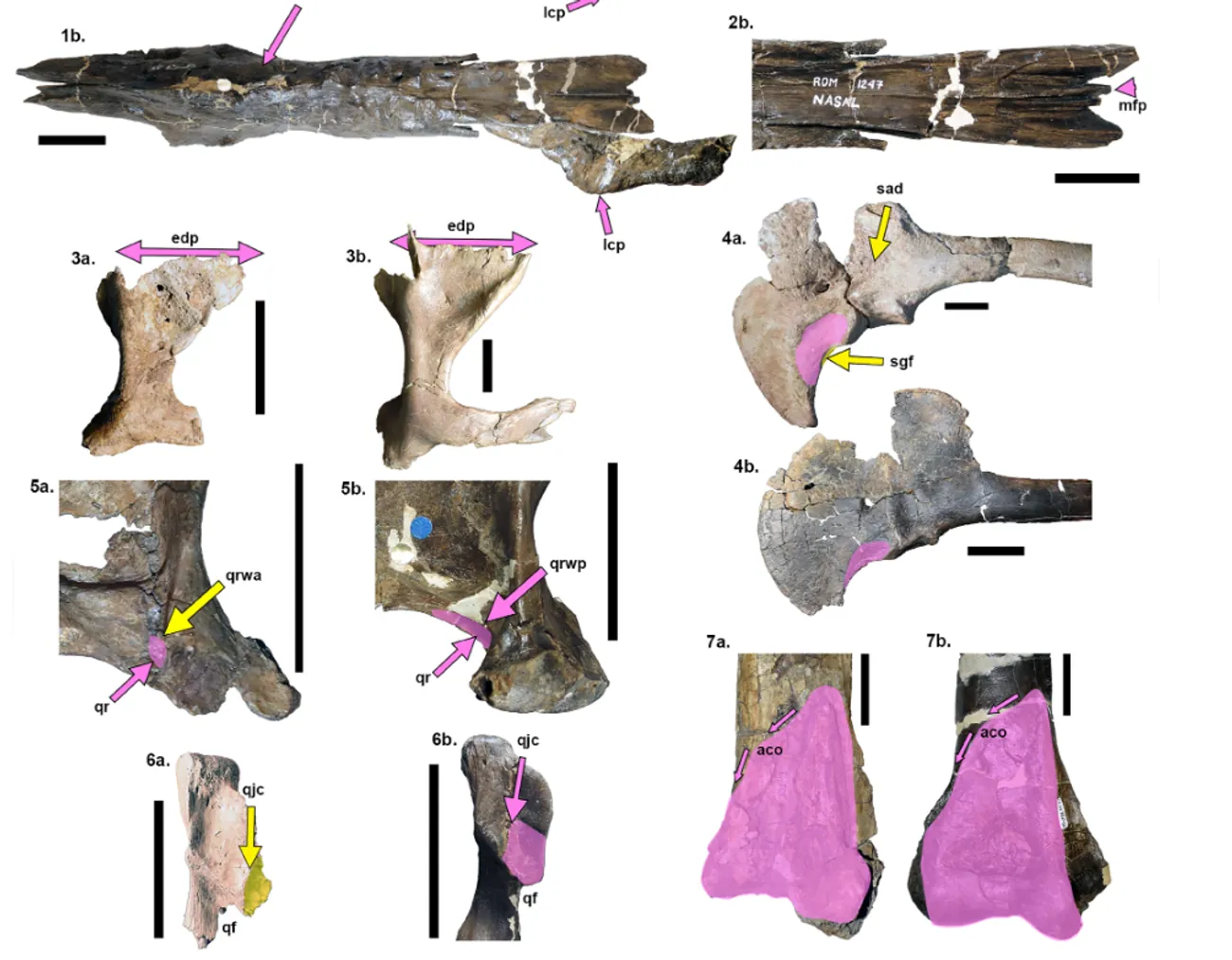Scientists have found the missing link between giant tyrannosaurs and their smaller ancestors
Kyiv • UNN
Canadian scientists have discovered a new species of tyrannosaur that lived 86 million years ago. Khankhuuluu mongoliensis was smaller than Tyrannosaurus Rex and may have been dangerous to humans.

Canadian scientists claim that fossils found in Mongolia in the 1970s are the newest known ancestor of tyrannosaurs, and a link between these giants of the dinosaur world and their smaller ancestors, which is still unknown to science, reports UNN.
Details
In an article for the journal Nature, researchers from the University of Calgary in Canada, Darla Zelenitska and her colleagues, report that they re-examined fossils discovered in Mongolia in the early 1970s, which are now stored at the Institute of Paleontology of the Mongolian Academy of Sciences.
Although the remains of this dinosaur were found almost 50 years ago, they were long considered to belong to an already known species.
The new species was named Khankhuuluu mongoliensis, which translates as "Prince of Dragons of Mongolia". In the 1970s, they were identified as a representative of the little-studied species of alectosaurs - Alectrosaurus olseni, which is also considered a relative of tyrannosaurs. Since then, these bones have been stored at the Institute of Paleontology of the Mongolian Academy of Sciences.
Jared Voris, one of the authors of the study, first saw the remains of the "Prince of Dragons" during his visit to Mongolia several years ago, when he was studying tyrannosaur fossils. He drew attention to an unusual feature. The bone of the muzzle turned out to be hollow inside, which is typical for early representatives of the tyrannosaur family.
After comparing with other samples of alectosaurs, the researchers concluded that this is a separate species, previously unknown to science. Although an adult Tyrannosaurus Rex could reach a mass of 7–9 tons, the weight of Khankhuuluu mongoliensis, according to scientists' estimates, did not exceed 750 kilograms with a body length of about four meters.

According to Voris, if a human would be only a light snack for Tyrannosaurus Rex, then for Khankhuuluu it could become a full-fledged prey, if a modern human existed in the same period. The scientist even noted that he would prefer a meeting with an adult tyrannosaur than with this aggressive predator.
According to researchers' estimates, the "Prince of Dragons" lived on the territory of modern Mongolia about 86 million years ago, while the era of tyrannosaurs falls on the period between 72 and 66 million years ago.
Unique 280 million-year-old fossils found in Italy13.11.24, 18:09 • 105442 views
Let us remind you
In Spain, a new species of dinosaurs that lived on the Iberian Peninsula during the Cretaceous period has been discovered. The species found during the construction of the Madrid-Levante high-speed railway line belongs to the group of sauropods; it was widespread in the territory of modern Spain 73 million years ago.